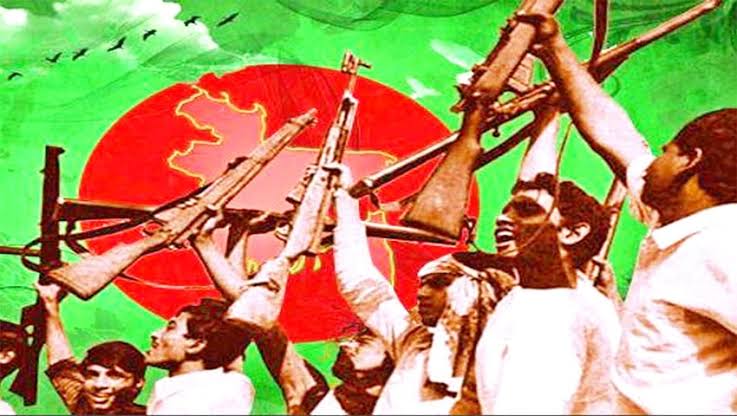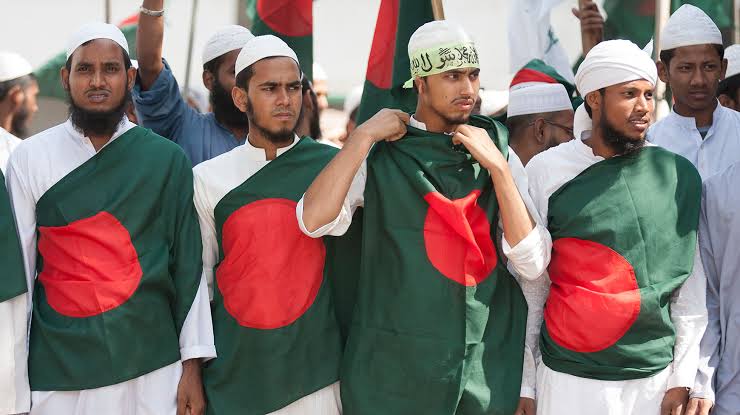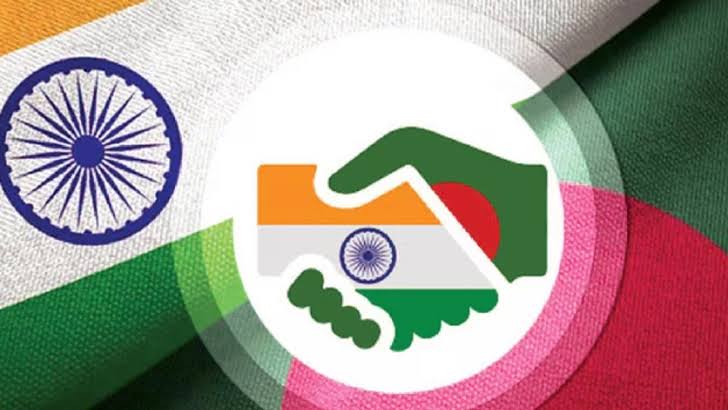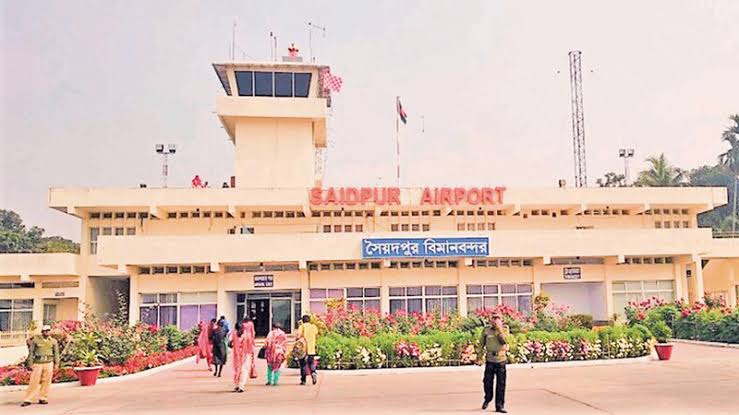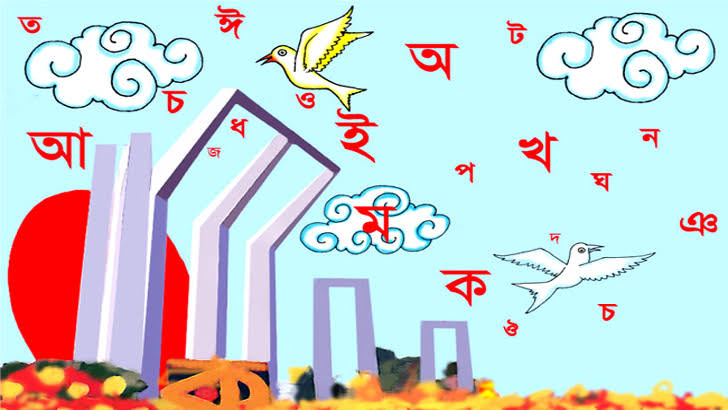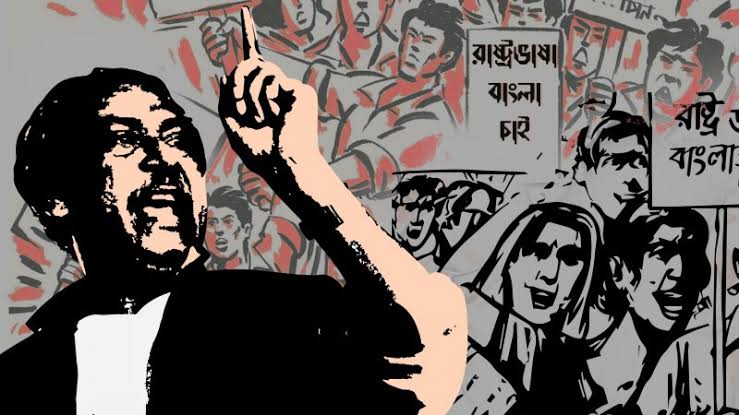বাংলাদেশ-রাশিয়া সম্পর্কের বর্তমান সংকট ও তিক্ততাঃ গতিপথ কোনদিকে?
সুদীপ কুমার আচার্য্য রুশ-বাংলাদেশ মৈত্রী সম্পর্ক দীর্ঘকালের। বাংলাদেশের উত্থানের প্রেক্ষাপট বিচার করলে ভারত ব্যতীত অন্য যে দেশটি মুক্তিযুদ্ধের কালে (১৯৭১) বাংলাদেশের পাশে সামরিক সাহায্য ও আর্থিক দিক দিয়ে সবচেয়ে বেশী করে উপস্থিত ছিলো তারা সাবেক সোভিয়েত ইউনিয়ন। অন্যদিকে আমেরিকার নিক্সন প্রশাসন পশ্চিম পাকিস্তানের পক্ষ অবলম্বন করে সপ্তম নৌবহর পাঠিয়েছিল। ইয়াহিয়া খানের আরেক বন্ধু চীনও জাতিসঙ্ঘে বাংলাদেশের স্বাধীনতা প্রাপ্তি ভেস্তে দিতে সেই সময়ে ভারত-সোভিয়েত-বিরোধী একতরফা কথাবার্তা বলে যাচ্ছিল। অর্থাৎ cold war এর আবর্তে পড়ে ভারতীয় ও সোভিয়েত সংযুক্ত ক্ষমতা বা মোকাবিলা কৌশল না থাকলে বাংলাদেশের মুক্তিযুদ্ধ সফলতা পেত না। নতুন কোন রাষ্ট্র গড়ে উঠত কী না তাতেও সন্দেহ আছে! কেননা সোভিয়েত ইউনিয়ন বা U.S.S.R. ছিল অন্যতম রাষ্ট্র যা বাংলাদেশকে স্বীকৃতি দিয়েছিল গড়ে ওঠার সময়েই। আজ এত বছর পর পিছনে তাকালে দেখা যায় সেই `Age of Extremes’ এর সময়কাল অতিক্রান্ত, U.S.S.R. ভেঙে পড়েছে এবং একমেরু, দ্বিমেরু থেকে বহুমেরু বিশ্বে বিশ্বক্ষমতার ভরকেন্দ্রের স্থানান্তর ঘটে চলেছে। ১৯৭২ থেকে যে বাংলাদেশ-রুশ কূটনৈতিক সম্পর্কের সূচনা তা পেরিয়ে গেছে অর্ধ শতাব্দী কিন্তু পরিণত কতটা হয়েছে তা ভেবে দেখতে হবে। কেননা গত কুড়ি বছরে চীন-ইরাণ-পাকিস্তান জোটের প্রতি বাংলাদেশ অনেক বেশী দায়বদ্ধতা দেখিয়েছে। বাংলাদেশের অর্থনৈতিক ক্ষেত্রে যে কিছুটা জোয়ার এসেছে তার দিকে আন্তর্জাতিক মহল বিশেষত আমেরিকা ও পশ্চিম ইউরোপীয় দেশগুলির নজর আছে। চীন, মার্কিন বদান্যতা বা প্রসাদ লাভের তাগিদ বিশ্বের অন্যান্য বিকাশশীল দেশ যেমন শ্রীলঙ্কার মতন বাংলাদেশেরও ছিল বা আছে। হয়ত সে কারণেই গত কয়েক বছরে এসব দেশ বাংলাদেশের আভ্যন্তরীণ বা কখনও পররাষ্ট্রীয় নীতি নির্ধারণের ব্যাপারে মাথা গলাতে চাইছে। সেক্ষেত্রে বাংলাদেশের উচিত শক্তহাতে বিষয়গুলির প্রতিরোধ করা, যা না করে তারা ভীত সন্ত্রস্ত চিত্তে নয়া আর্থিক সাম্রাজ্যবাদের বাঁধা গতে বা স্নায়বিক যুদ্ধকালীন পরিস্থিতির ন্যায় স্যাটেলাইট রাষ্ট্র বনে যেতে চাইছে। যা স্বকীয়তা, স্বাধীনতা, সাম্য, সার্বভৌমত্ব ও পারস্পরিক বোঝাপড়া বা সৌভ্রাতৃ্ত্বের বিরোধী। একথা সত্য যে বাংলাদেশে আন্তর্জাতিক নানান লবি তাদের কসরৎ দেখিয়ে থাকে কিন্তু এসব উপেক্ষা করে কূটনৈতিক বোঝাপড়া বা নিকট বন্ধুদের সহযোগিতার মাধ্যমে তাকে ম্যানেজমেন্ট করাই পররাষ্ট্রনীতির অন্যতম লক্ষ্য হওয়া উচিত। বর্তমান কঠিন সময়ে বাংলাদেশের প্রতিবেশী বিভিন্ন বন্ধু রাষ্ট্রের সঙ্গে ঘনিষ্ট সহযোগিতা ও সম্পর্কের মাধ্যমে উন্নয়ন। কোনো দূরবর্তী দেশের অঙ্গুলিহেলনে ওঠাবসা নয়। এরকমই এক বন্ধু রাষ্ট্র রাশিয়ার প্রতি সাম্প্রতিক সময়ে বাংলাদেশের ভুলনীতি সম্পর্কে জটিলতা বাড়িয়েছে। সাম্প্রতিক কিছু ঘটনাই যার প্রমাণ। গত ২০২২ সালের ১৪ই নভেম্বর রাশিয়ার পিটসবার্গের বন্দর থেকে ছেড়ে একটি মালবাহী জাহাজ উরসা মেজর বঙ্গোপসাগরে এসে উপস্থিত হয় এবং তারা বাংলাদেশের মংলা বন্দরে ঢুকে মালপত্র খালাসের জন্য আসছিলেন। কিন্তু আকস্মিকভাবে বাংলাদেশের নৌ-দপ্তর থেকে জাহাজটিকে বন্দরে ভিড়তে দেওয়া হয়নি এবং অগত্যা ভারতের হলদিয়া বন্দরের জেটিতে সেটি মালপত্র খালাস করে। কারণ পেন্টাগনের হুমকি। ঢাকার বিদেশমন্ত্রককে মার্কিন দূতাবাস থেকে জাহাজটির বিরুদ্ধে কঠোর আপত্তি জানানো হয়েছিল। এই ম্যাসেজটি আসার পরই বাংলাদেশ নৌ-দপ্তর উরসা মেজরকে তার জলসীমা ছেড়ে বেরিয়ে যেতে বলে। আসলে কার্গো জাহাজটিতে বাংলাদেশের পাবনার ঈশ্বরদী উপজেলার রূপপুরে যে পারমাণবিক শক্তিকেন্দ্র গড়ে উঠেছে তারই প্রয়োজনীয় জিনিসপত্র ছিল। এনিয়ে ২২শে ডিসেম্বর ২০২২ রাশিয়ার দূত বাংলাদেশ পররাষ্ট্রমন্ত্রণালয়ে গিয়ে ম্যারিটাইম অ্যাফেয়ার্স সচিব (Maritime Affairs Secretary) রিয়ার অ্যাডমিরাল খুরশিদ আলমের সঙ্গে ৩০ মিনিট একান্ত বৈঠক করেন কিন্তু কোন কাজ হয়নি। অর্থাৎ বাংলাদেশের বন্দর ব্যবহার করার আপত্তি অটুট থাকে। এখন প্রশ্ন হল আমেরিকার আপত্তির কারণ কী ? এবং এসব কারণকে পররাষ্ট্র ক্ষেত্রে বাংলাদেশ কেন গুরুত্ব দেবে তার রহস্য কি? ইউক্রেন রাশিয়া যুদ্ধ শুরু হবার পর থেকেই জো বাইডেন প্রশাসনের তোপের মুখে রাশিয়া, ইউ.এস.এ. প্রায় ৬৯টি রাশিয়ান জাহাজকে ব্ল্যাক লিস্টেড করেছে বা কালো তালিকায় তুলেছে। বিশেষত মিলিটারী কার্গো জাহাজ যাতে সামরিক অস্ত্র শস্ত্র বা গুরুত্বপূর্ণ প্রযুক্তিকৌশলজনিত সরঞ্জাম থাকতে পারে। এরকমই একটি জাহাজ স্পার্টা-৩ (SPARTA- 3), আমেরিকা ও তার বন্ধু রাষ্ট্রগুলির বন্দরে এসব জাহাজকে প্রবেশ করতে দেওয়া হবে না। তাই বাংলাদেশকেও মার্কিন প্রশাসনের তরফে এ নিয়ে কড়া বার্তা দেওয়া হয় । বলা হচ্ছে স্পার্টা-৩ জাহাজটি নিজের রং পাল্টে নতুন চেহারা নিয়ে ২৪শে ডিসেম্বর বাংলাদেশের মংলায় ঢোকার চেষ্টা করছিল। বাংলাদেশের তরফে বিবৃতি দিয়ে বলা হয় উরসা মেজর নামধারী এই জাহাজটি বাংলাদেশের জলসীমায় প্রবেশ বা বন্দরে ঢুকতে পারবে না। কারণ এরকম নামের বা এই রুটের কোন জাহাজকে কখনো বাংলাদেশ তাদের কোন কাজে লাগায়নি । কিন্তু আসলে রুশ-বাংলাদেশ যৌথ পারমাণবিক প্রকল্পের সরঞ্জামই এটি বহন করছিল । এতে কোন কিছু বিপদজনক ছিল না তথাপি এটি বাংলাদেশ নৌ-দপ্তরের সবুজ সংকেত পায়নি। আশ্চর্যের বিষয় হল রূপপুর কেন্দ্রটির মেগাপ্রকল্পে অনেক রাশিয়ান ও ইউক্রেনিয়ান প্রযুক্তিবিদ একসাথে কাজ করছেন । রাশিয়া বাংলাদেশকে সস্তায় তেল ও জ্বালানি সরবরাহে সাহায্য করেছে; এছাড়া রাশিয়া বাংলাদেশে প্রাকৃতিক গ্যাস, যন্ত্রপাতি, সার রপ্তানি করে। মানবসম্পদ উন্নয়নে নানান সহযোগিতা ও সর্বোপরি পরমানু বিদ্যুৎকেন্দ্রটির তৈরীতে ১২.৬৫ বিলিয়ন অর্থসাহায্য করেছে । মস্কোস্থিত Russian State Nuclear Energy Corporation একটি বৈজ্ঞানিক গবেষণা সংস্থা যারা হিমবাহ, হিমশৈল বা মেরু অঞ্চলে সমুদ্রে রাস্তা বানানোর জন্য বরফ ভাঙ্গার কাজের জন্য পরমাণুচালিত জাহাজ বানায়। নিউক্লিয় রিঅ্যাক্টর, নিউক্লিয় জ্বালানি, ইয়রেনিয়াম খনি খনন, পারমাণবিক গবেষণার উন্নতি, হাওয়া শক্তি, হাইড্রোজেন জ্বালানি তৈরী করে, পৃথিবীর নিউক্লিয়ার ইন্ডাস্ট্রির মধ্যে এরা প্রধানতম। বাংলাদেশেও এঁরাই কাজ করছেন (রোসাটম সংস্থা) । ২০১১ সালের ফেব্রুয়ারীতে ২৪০০ মেগাওয়াট এই প্রকল্পটি রাশিয়ার যৌথ উদ্যোগে তৈরী হওয়ার বিষয়টি চূড়ান্ত হয় । এছাড়া আর্থিক ক্ষেত্রে নানান বাংলাদেশী পণ্য গম, চামড়া, বস্ত্র, পাট, বরফজাত খাদ্য, চা, সেরামিক দ্রব্য রাশিয়া আমদানি করে থাকে। অর্থাৎ বাংলাদেশের একটি ভাল রপ্তানি বাজার রয়েছে রাশিয়ায়। ২০২০ সালে বাংলাদেশ প্রায় ৭৯ কোটি মার্কিন ডলারের পণ্য রাশিয়া থেকে আমদানি করেছিল; ২০১৯-২০ অর্থবর্ষে রাশিয়া বাংলাদেশকে প্রায় ১০০ কোটি ডলার ঋণ সহায়তা করেছিলো। সুতরাং আর্থিক ক্ষেত্রে বোঝাপড়ার সম্ভাবনা উজ্জ্বল। কিন্তু এই বিষয়টিকে স্বল্প গুরুত্ব দিয়ে দেখা ঠিক নয়। রাশিয়ার বিদেশ মন্ত্রকের মুখপাত্র মারিয়া জাকারোভা দাবী করেন আমেরিকার চাপেই বাংলাদেশ নতি স্বীকার করে রুশ জাহাজকে বন্দরে প্রবেশ করতে দেয়নি। আমেরিকার স্বার্থ এক্ষেত্রে কাজ করছে কিন্তু আন্তর্জাতিক ক্ষেত্রে নীতি নির্ধারণে বাংলাদেশের উচিত স্বাধীনভাবে কাজ করা । তাছাড়া পারমাণবিক প্রকল্পগুলির দিকেও আমেরিকার নজর আছে । যাইহোক এক্ষেত্রে ভারতের ভূমিকা ছিল যথেষ্ট প্রশংসনীয় এবং বৃহৎ শক্তিধর দুটি রাষ্ট্রের পারস্পরিক বিবাদের মধ্যে থেকে বাংলাদেশকে তারা পুরোটাই স্বস্তি দিতে পেরেছে যা ভারত-বাংলাদেশ মৈত্রীর পক্ষেও অত্যন্ত ইতিবাচক। অর্থাৎ মার্কিন যুক্তরাষ্ট্রের চাপকে উপেক্ষা করেই ভারতবর্ষ পরমাণুকেন্দ্রের এসব সরঞ্জাম হলদিয়া বন্দরে নামানোর অনুমতি দেয় এবং যা স্থলপথে পুনরায় বাংলাদেশে পৌঁছে দেওয়া হয়। অর্থাৎ ভারতীয় ট্রানজিটের সুফল পেল বাংলাদেশ। অন্যথায় বিষয়টি আরও জটিল হতো । রাশিয়ার পক্ষ থেকে মস্কোর ঢাকা এমব্যাসী থেকে রাষ্ট্রদূত কামরুল ইসলামকে ডেকে কড়া বার্তা দেওয়া হয়েছে। রাশিয়া জানিয়েছে এরকম পদক্ষেপ রুশ-বাংলাদেশ বন্ধুত্বের জন্য একেবারেই শুভ ইঙ্গিত নয় । ঐতিহাসিক কারণে এবং বাস্তবতার নিরিখে দুই দেশের বন্ধুত্বের সম্পর্ক এক্ষেত্রে ধাক্কা খাবে। বাস্তবিকভাবেই বর্তমান সরকার গত ১৬ই জানুয়ারী বাংলাদেশে ৬৯টি রুশ জাহাজ প্রবেশে নিষেধ জারী করেছিল, এখন এটি জাতীয় স্বার্থের কতটা অনুকূলে যাবে তা সময় এলে বোঝা যাবে। পাশাপাশি মার্কিন বা ব্রিটিশ লবির সঙ্গে বাংলাদেশের …
বাংলাদেশ-রাশিয়া সম্পর্কের বর্তমান সংকট ও তিক্ততাঃ গতিপথ কোনদিকে? Read More »


